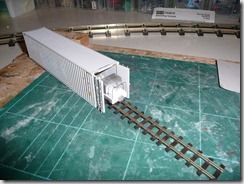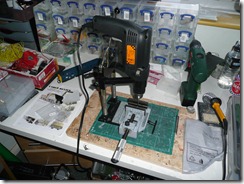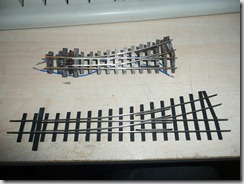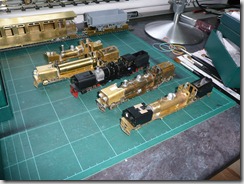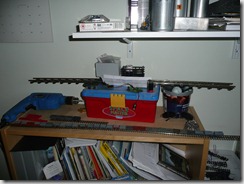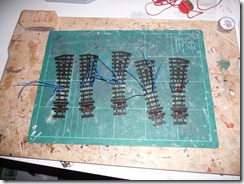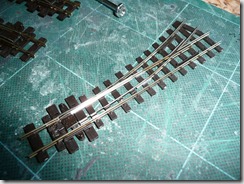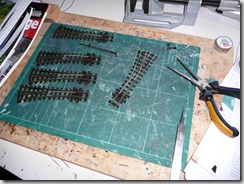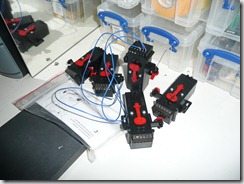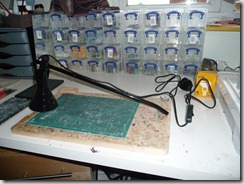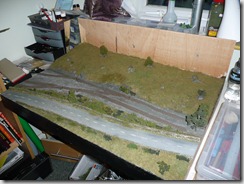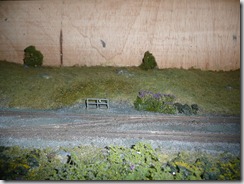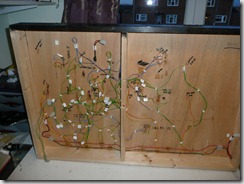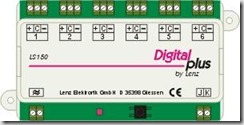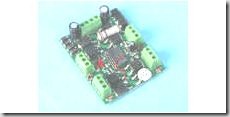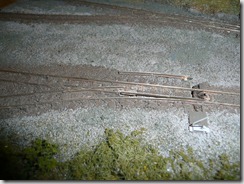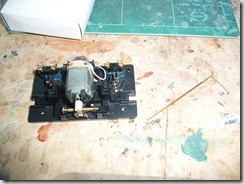There can be little doubt that the best paint finishes come from airbrushing. Thus I have invested in some kit. Off of ebay I got this little lot for £100 (inc P+P).
Two double-action airbrushes. Yes I know they are ‘cheap’ Chinese copies, but the reviews I have read say that they perform really well, so I’ll start with these and see how I get on.

A compressor, with tank and in line moisture trap. The tank means that the compressor is used less (less wear on the piston, another moisture trap and less noise!). Also using air from the tank avoids pulsing of the air (the action of the piston). To be honest this is worth £100 on its own!
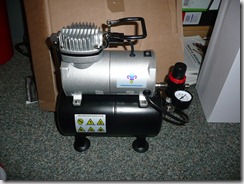
and some nice extras – a T connector to split the airflow, allowing 2 airbrushes to be in action at once. Also included is a double stand and a couple of extra pots and a fine mini filter to attach to the airbrush to catch any last bits of moisture in the air. Plus two braided air hoses too. Everything I need. I have also invested in a book on airbrushing.
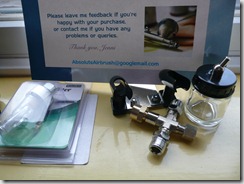
Next purchase will be one of these… the expo tools extractor, Dad has the more expensive (but less portable) graphicair. This should be fine for my requirements as is about £70. The video shows how compact and effective it is.
Testing of the kit will have to wait until the weekend…
Oh and I’ll be on the look out again for an ultrasonic cleaner (really good for cleaning airbrushes).
Colin
